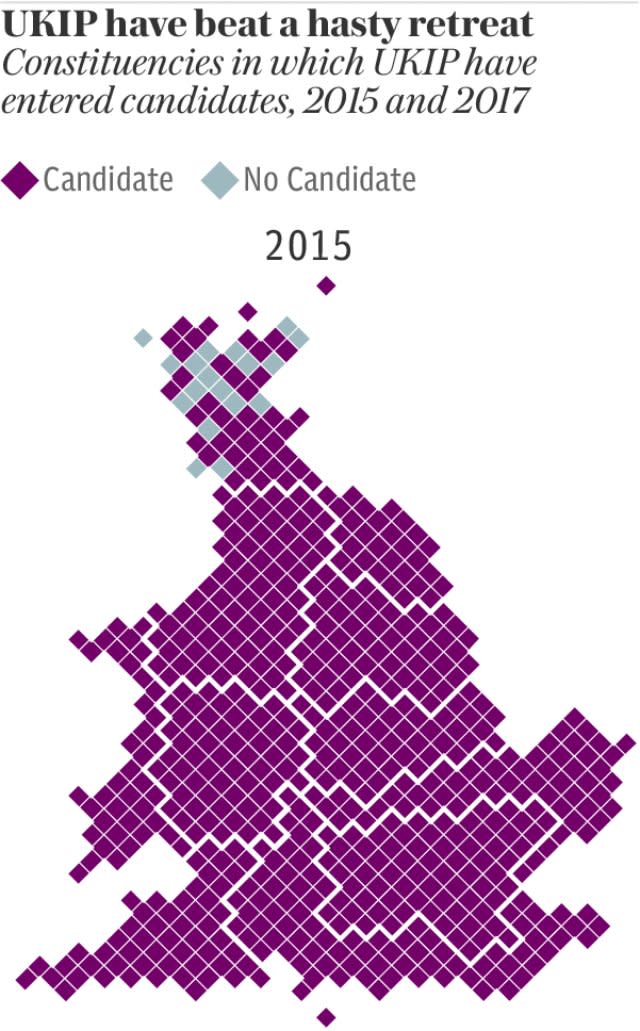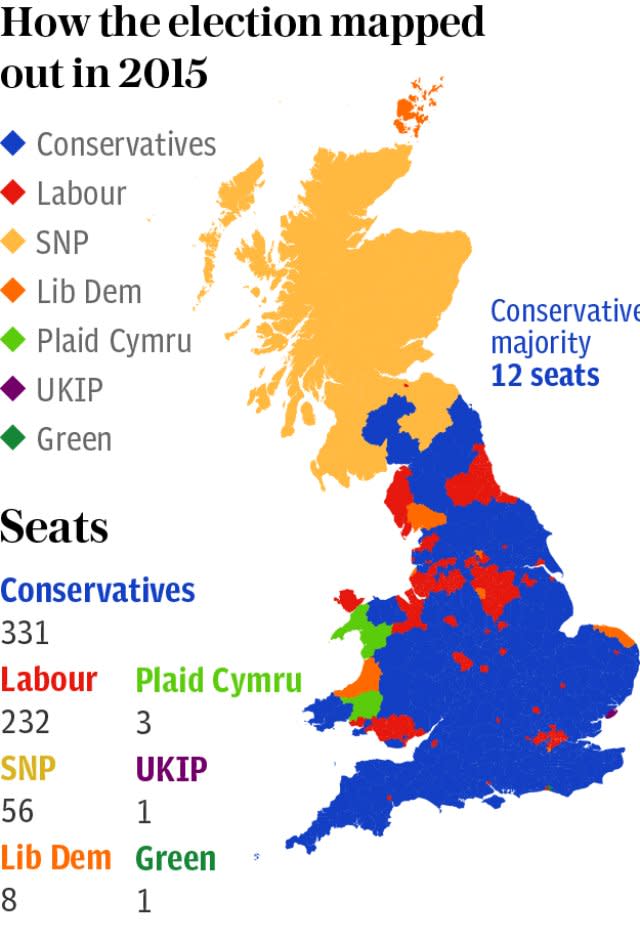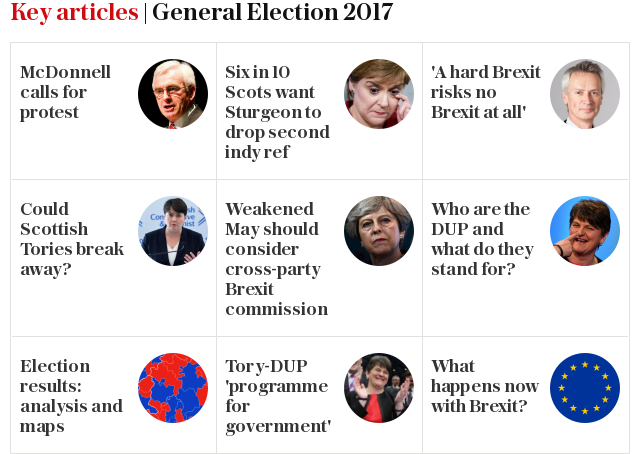UK election parties and candidates: Who is standing in your constituency in 2017?

The General Election, which will be held on June 8, will see 3,303 candidates from dozens of parties contesting a total of 650 seats.
This is a big drop compared to the 3,971 candidates who stood in the 2015 General Election which, in turn, was 162 lower than the all-time high of 4,133 in 2010.
To stand as a candidate in the General Election, you have to submit an application to your local returning officer with a £500 deposit.
Find out who your local MP is, and see the size of their majority, by typing in your postcode here.

How many candidates are being put forward by each party?
There are 650 constituencies in the UK with the major parties putting forward candidates in the vast majority of these areas.
This year, however, UKIP are only fielding candidates in 378 of these constituencies according to figures compiled by Democracy Club, a huge reduction on the 624 who stood in 2015.

Paul Nuttall, the party leader has suggested that this is a deliberate act of self-sabotage designed to give Conservative candidates an advantage against pro-Remain opposition. Rather than votes being split between the two right-wing parties the Conservatives will be the only option.
This is likely to have a significant impact, given that this means that nearly half the population won't have a UKIP candidate to vote for. Many of these seats are key marginals which now have a greater chance of swinging to the Conservatives.
It means that it's extremely likely that Theresa May will not only win the election on June 8 but will do so with an improved majority.

MPs not standing
There are a number of well-known politicians stepping down in this election - including former Chancellor and then-favourite to become the next Prime Minister, George Osborne.
After Theresa May sacked him as chancellor, he became the editor of the London Evening Standard newspaper as well as a number of other jobs - including for the fund manager BlackRock. He then announced he was stepping down "for now".
Other Tory big-hitters to be leaving are former Conservative Party chairman Sir Eric Pickles, long-standing chairman of the Treasury Select Committee Andrew Tyrie and Tory-turned-UKIP-turned-independent MP Douglas Carswell.
Labour's Parliamentary group will lose former home secretary Alan Johnson, leading Leave campaigner Gisela Stuart and former health secretary Andy Burnham, who is tipped to become Mayor of Greater Manchester in May's local elections. says he will not stand again in June.
There are at least 17 other MPs known not to be standing:
Tom Blenkinsop - Labour (Middlesbrough South and East Cleveland)
Graham Allen - Labour (Nottingham North)
Iain Wright - Labour (Hartlepool)
Pat Glass - Labour (North West Durham)
Simon Burns - Conservative (Chelmsford)
John Pugh - Lib Dem (Southport)
Andrew Smith - Labour (Oxford East)
Angela Watkinson - Conservative (Hornchurch and Upminster)
Jim Dowd - Labour (Lewisham West and Penge)
Fiona Mactaggart - Labour (Slough)
Rob Marris - Labour (Wolverhampton South West)
Sir Gerald Howarth - Conservative (Aldershot)
Dave Anderson - Labour (Blaydon)
Michael Dugher - Labour (Barnsley East)
Michelle Thomson - Independent (Edinburgh West)
Sir Alan Haselhurst - Conservative (Saffron Walden)
David Mackintosh - Conservative (Northampton South)

MPs hoping to return
While the Westminster village will surely miss some of these big political personalities, there are plenty others eyeing up a seat in Westminster.
Tories Zac Goldsmith and Esther McVey, who both previously lost their seats, have both been selected to run again in 2017.
Zac Goldsmith infamously lost Richmond Park in a 2017 by-election to the pro-EU Lib Dems after he resigned from the Tories and stood as an independent in protest at the government's approval of Heathrow Airport expansion..
Goldsmith will seek to regain his old constituency, while Esther McVey - former TV presenter and former employment minister - has been selected to challenge George Osborne's old Tatton seat.
After their trouncing in the 2015 General Election, many Liberal Democrats are hoping to once again enter the fray. Sir Vince Cable, Sir Simon Hughes, Sir Ed Davey, Jo Swinson, Sir Bob Russell and Sir Nick Harvey are all senior Lib Dems that the party will hope it can get re-elected.
73-year-old former business secretary Vince Cable has confirmed he will stand again after losing his Twickenham seat to the Tories in 2015.
Former Lib Dem deputy leader Simon Hughes and energy secretary Ed Davey will follow suit, saying that they intend to fight for the Bermondsey and Old Southwark and Kingston and Surbiton seats that they lost in 2015.

Who are the main political parties in the UK?
The main two parties in the UK are the Conservative Party on the right and the Labour on the left.
Other parties to hold influence in Parliament include the SNP (Scottish National Party), the Liberal Democrats and the DUP (Northern Ireland's Democratic Unionist Party).
UKIP and the Greens will also stand in most constituencies in the General Election. Collectively these two parties won over five million votes in the election, but they each only won one MP in Parliament.
Current composition of the House of Commons
Before the election, the majority of the 650 MPs in Parliament are from the Conservative Party, with Labour and the SNP as the next largest parties.

In 2015, the Conservatives won 331 seats, winning a 12-seat majority in the House of Commons. The Labour Party ended the election with 232 MPs, and the SNP the third largest party with 56 MPs.
Since then, there have been a number of by-elections which have altered the composition of Parliament.
Mrs May's Tories are still the largest party, but with 330 MPs. Labour, the main opposition party, has 229 MPs going into the General Election.

How many female candidates are there in 2017?
The proportion of women standing as candidates in this year's general election is the highest on record.
The electorate will be presented with a combined total of 965 female candidates on June 8 according to figures compiled by Democracy Club and the Telegraph.
This is a lower number of female candidates than in 2017, however there are fewer candidates in total this time round. Back in 2015, 26 per cent of candidates were women compared to 29 per cent this year.


Our manifesto: Real political insight, free for 30 days.
Rely on unrivalled insight and sharp analysis from our stellar team of Westminster insiders.
Join the most trusted voice in politics. Follow Election 2017 with Telegraph Premium.

 Yahoo News
Yahoo News 